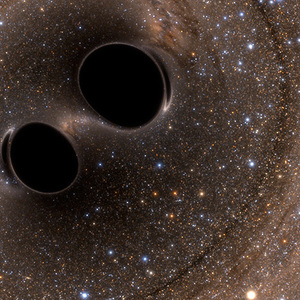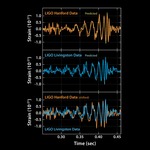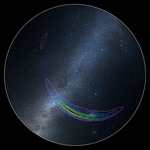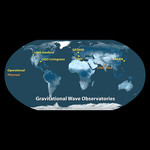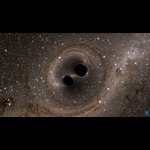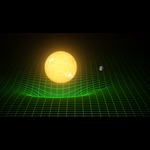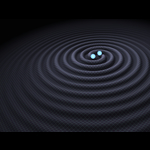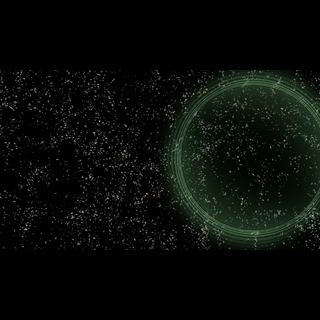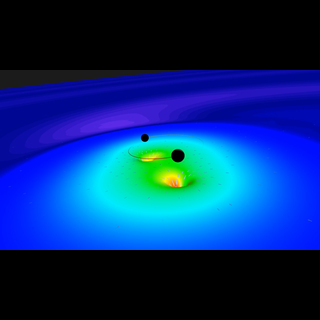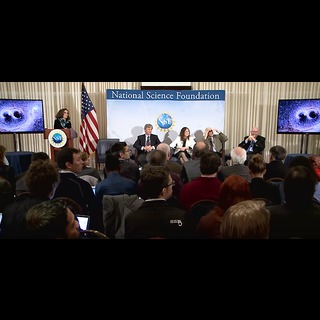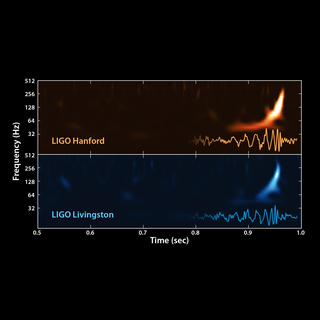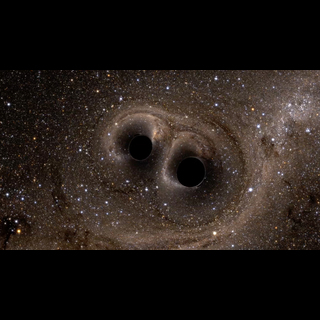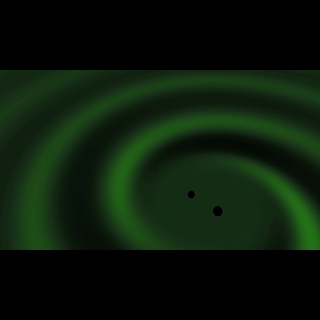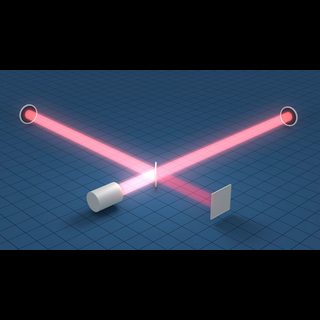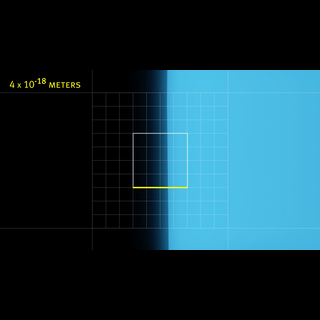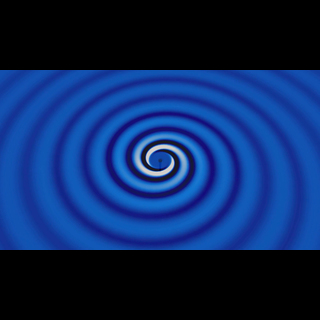Most Precise Ruler Ever Constructed
Animation created by T. Pyle, Caltech/MIT/LIGO Lab
This animation illustrates how the twin observatories of LIGO work. One observatory is in Hanford, Washington, the other in Livingston, Louisiana. Each houses a large-scale interferometer, a device that uses the interference of two beams of laser light to make the most precise distance measurements in the world.
The animation begins with a simplified depiction of the LIGO instrument. A laser beam of light is generated and directed toward a beam splitter, which splits it into two separate and equal beams. The light beams then travel perpendicularly to a distant mirror, with each arm of the device being 4 kilometers in length. The mirrors reflect the light back to the beam splitter, repeating this process 200 times.
When gravitational waves pass through this device, they cause the length of the two arms to alternately stretch and squeeze by infinitesimal amounts, tremendously exaggerated here for visibility. This movement causes the light beam that hits the detector to flicker.
The second half of the animation explains the flickering, and this is where light interference comes into play. After the two beams reflect off the mirrors, they meet at the beam splitter, where the light is recombined in a process called interference. Normally, when no gravitational waves are present, the distance between the beam splitter and the mirror is precisely controlled so that the light waves are kept out of phase with each other and cancel each other out. The result is that no light hits the detectors.
But when gravitational waves pass through the system, the distance between the end mirrors and the beam splitter lengthen in one arm and at the same time shorten in the other arm in such a way that the light waves from the two arms go in and out of phase with each other. When the light waves are in phase with each other, they add together constructively and produce a bright beam that illuminates the detectors. When they are out of phase, they cancel each other out and there is no signal. Thus, the gravitational waves from a major cosmic event, like the merger of two black holes, will cause the signal to flicker, as seen here.
By digitizing and recording the specific patterns of signals that hit the LIGO detectors, researchers can then analyze what they see and compare the data to computer models of predicted gravitational wave signals.
The effects of the gravitational waves on the LIGO instrument have been vastly exaggerated in this video to demonstrate how it works. In reality, the changes in the lengths of the instrument's arms is only 1/1000th the size of a proton. Other characteristics of LIGO, such as the exquisite stability of its mirrors, also contribute to its ability to precisely measures distances. In fact, LIGO can be thought of as the most precise "ruler" in the world.
- Date
- February 11, 2016
- ID
- ligo20160211v6
- Type
- Science
- Credit
- LIGO/T. Pyle

